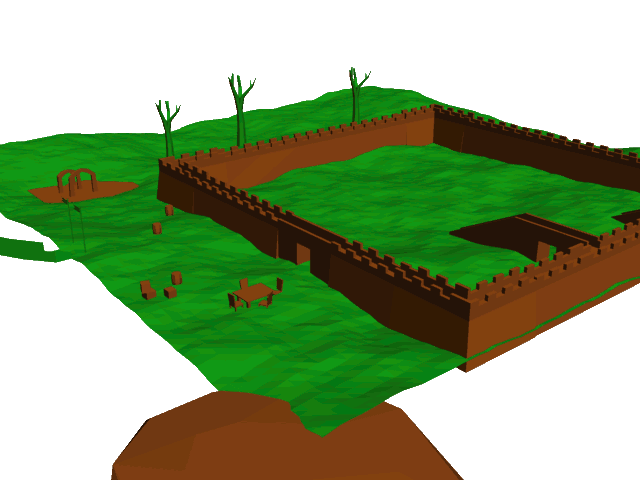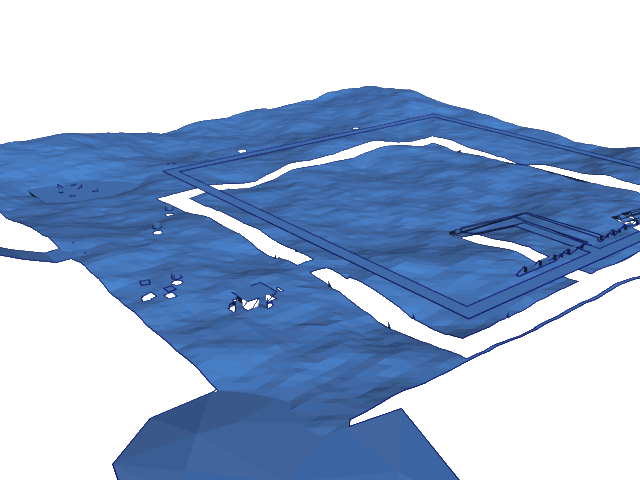 Source content geometry for part of a scene in the 3D content processing demo.
Source content geometry for part of a scene in the 3D content processing demo.
| PathEngine home | previous: | next: |
PathEngine's 3D content processing operates on arbitrary sets of 3-dimensional scene data and generates mesh representations of ground (or walkable) surfaces based on that data, suitable for use with the PathEngine runtime.
Scene geometry can be specified through a conventional 3D triangle mesh representation,
and through a custom convex solid representation.
The data being passed in to the content processing can then consist of a combination of these two element types.
Triangle mesh data is usually straightforward to set up, with scene information generally already being available in this form.
The convex solid representation can be more efficient (in particular when using the 'BSP' combination method),
but then usually requires some kind of (minimal) scene markup.
(See
Part of a scene in the 3D content processing demo is shown here, with convex solid elements coloured in orange, and mesh elements coloured in green.
 Source content geometry for part of a scene in the 3D content processing demo.
Source content geometry for part of a scene in the 3D content processing demo.
Roughly speaking, the basic process is to:
Note that the ground mesh result can include vertical height detail information,
in addition to information about ground connectivity.
(The PathEngine runtime doesn't search directly through the polygons in the 3D ground mesh,
and this height detail information doesn't affect the performance of PathEngine's core
pathfinding and collision queries.)
 Ground mesh result from the 3D content processing demo.
Ground mesh result from the 3D content processing demo.
| Documentation for PathEngine release 6.04 - Copyright © 2002-2024 PathEngine | next: |